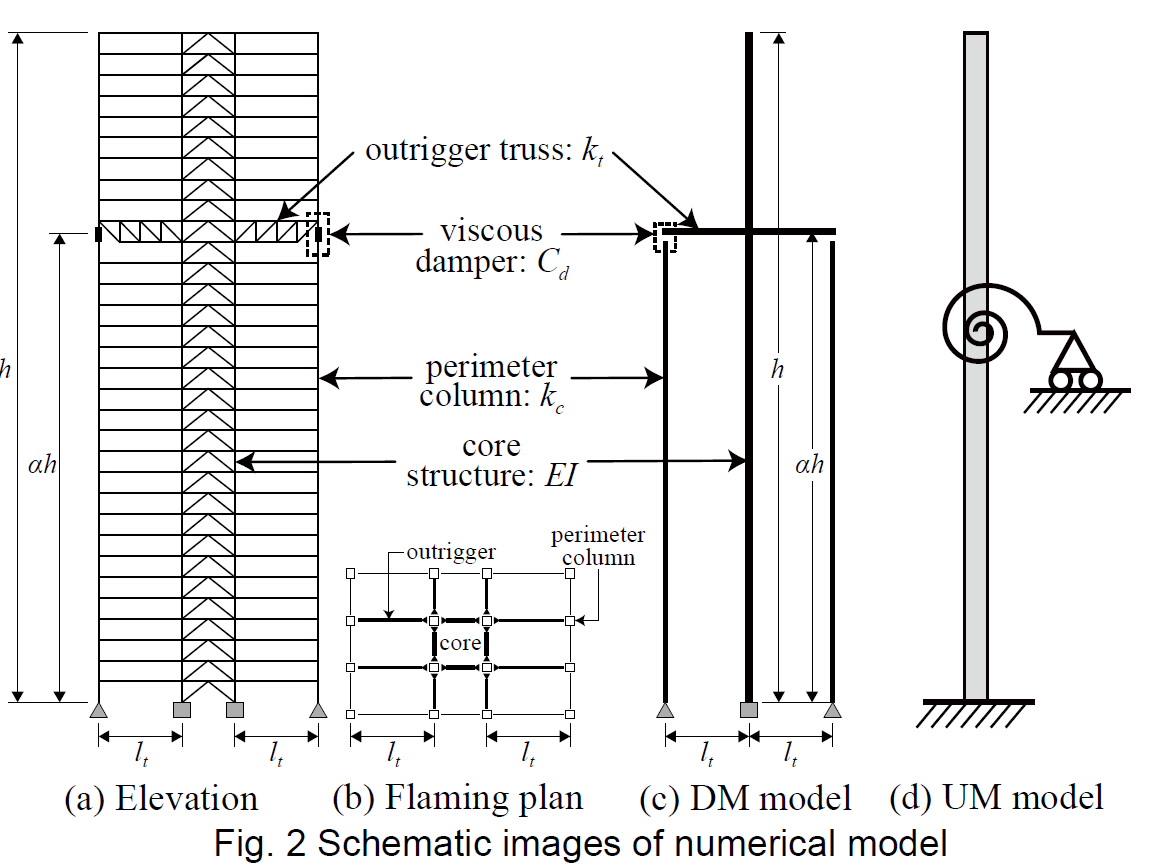本研究は,非比例減衰を考慮した広範な数値モデルの各種数値解析を用いて,特にモード減衰比に着目したダンパー付アウトリガー構造の最適設計法の知見を拡充しました。本研究は超高層建物のパッシブ応答制御に関する研究シリーズの第一弾であり,博士課程の同級生がBRB付アウトリガー構造の地震応答特性を絨毯爆撃的な時刻歴応答解析で検討していたのに対して,対象を線形構造に限って複素固有値解析で丁寧に動的応答特性を確認してみようと思ったことが始まりでした。論文はこちら
The outrigger system incorporating dampers between the outrigger truss and perimeter column can significantly reduce dynamic response compared with the conventional one, and is becoming the most popular structural system for tall buildings in seismic regions except for Japan. While Smith and Willford who are the proposers of this damped outrigger system recommend to confirm the modal damping ratio in the design, there are few proposal of optimal design strategy based on the modal damping ratio. Therefore, this paper deeply investigated the relation between the modal property and the seismic response reduction by the single outrigger system with linear viscous dampers, and discussed 1st mode control design strategy. The section 2 outlines the general information of the numerical models and design parameters. The section 3 and 4 analyze the effects of the design parameters on the modal property and maximum seismic responses. The section 5 propose a simple formula of optimal damper stiffness ratio to maximize 1st mode damping ratio. The section 6 applied the proposed 1st mode control design strategy to a Japanese-type super tall building where aspect ratio is relatively small.
